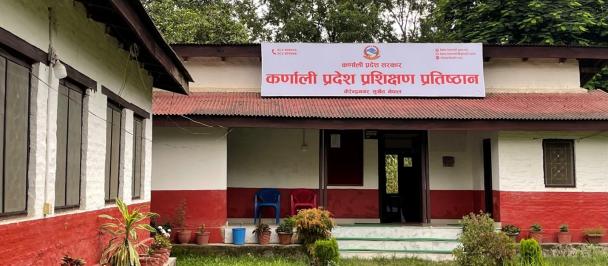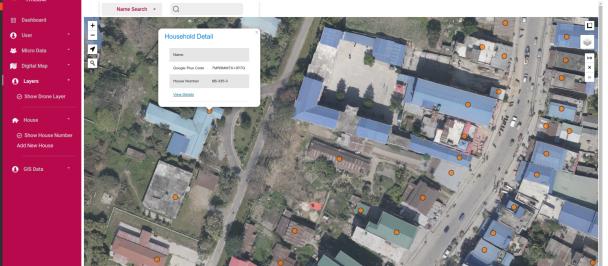Local governments are promoting the country’s cultural and heritage sites by developing QR storyboards. The digital boards are promoting Nepali tourist, cultural and heritage sites and the drive to disseminate authentic information about those places continues.
Digitizing Local Destinations
April 2, 2024
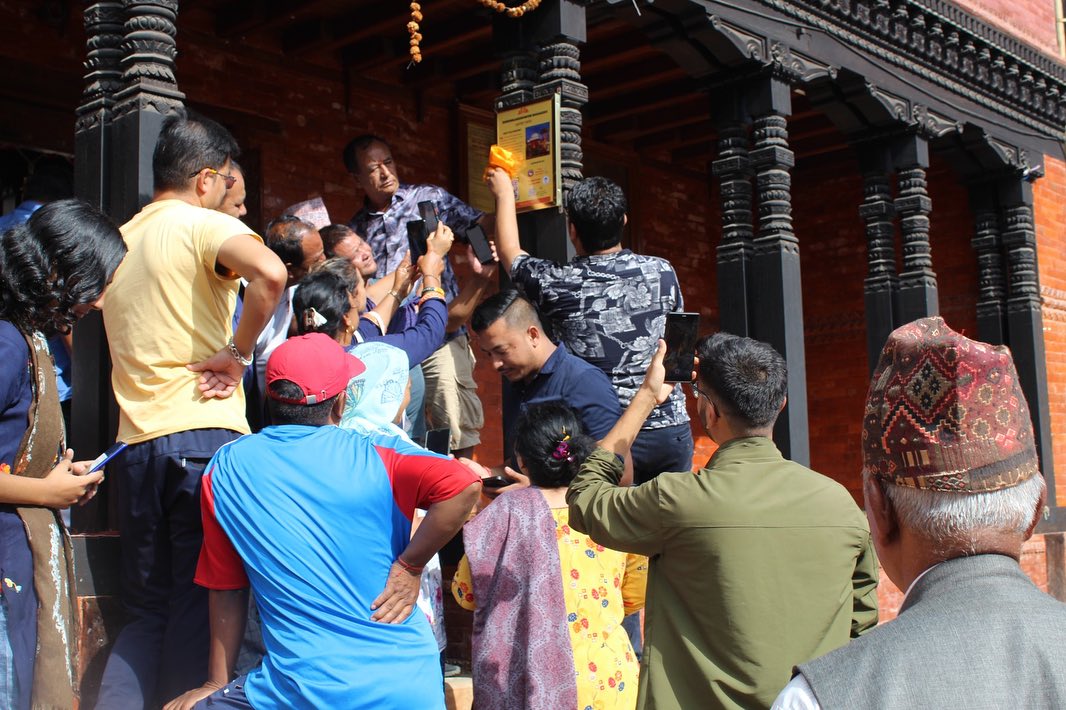
JOMSOM, Mustang
Every year, thousands of foreign tourists' flock to Mustang. Lured by snow-capped mountains, ancient Tibetan culture and mixed society, foreigners from all over the world visit local tourist destinations of Nepal's Himalayan region. Those Mustang visitors rarely miss Muktinath temple, the highly respected religious site for both Hindus and Buddhists.
But visitors were in the dark about its religious importance as most of them used to reach there without guides. Youngsters reliant on smartphones and google hardly read about those destinations in detail before heading to those places. When asked, even guides may explain its religious, archeological and cultural aspects of historic, cultural and religious sites in different ways depending upon who is guiding.
Reason: there was no official information about it. Whenever tourists want to know the religious and cultural importance of religious sites there would be no one to explain those affairs in detail.
As a local, Ringjing Nyamgel Gurung, chairman of Varagung Muktichhetra Rural Municipality, was aware of this problem. Shortly after taking charge of local government, he thought of installing physical maps and details around the temple premises. But the idea itself was traditional and showing everything in a single map wasn’t possible. The hoarding board could be easily destroyed if not protected properly.
So, chairman Gurung decided to use information technology to disseminate official information in an easy way when tourists want to know about the religious site. He thought digitization would further promote religious tourism in Himalayan region.
Gurung planned to develop a digital storytelling tool. A few IT companies were approached. In collaboration with SAARANG, a budding technology company, the rural municipality installed a QR storyboard. It worked out.
Now, visitors can scan it to get official information about this religious site. They can also listen and watch the story of Muktinath in different languages.
“We are in the digital age. So, QR story boards are developed. And visitors can now scan the board pasted inside temple premises and get authentic information in detail,” said chairman Gurung, “These days, no entrepreneur needed to explain this temple.”
Audio, video and text are created. The multi-media content that too in different languages is digitally created in QR storyboard. Those details are shared via QR-storyboard. Visitors roaming around the cultural sites can get credible information free for cost by scanning the QR storyboard.
The details about Muktinath temple are digitally readied in six different languages—Nepali, English, Spanish, Hindi, Japanese and Chinese.
The municipality had installed a QR storyboard in Kagbeni, the beautiful tourist destination below the Muktinath temple. But the QR story board was swept away by the devastating floods in the rainy season of 2023. Kagbeni settlement, which is considered a rain shadow area, was badly damaged by floods.
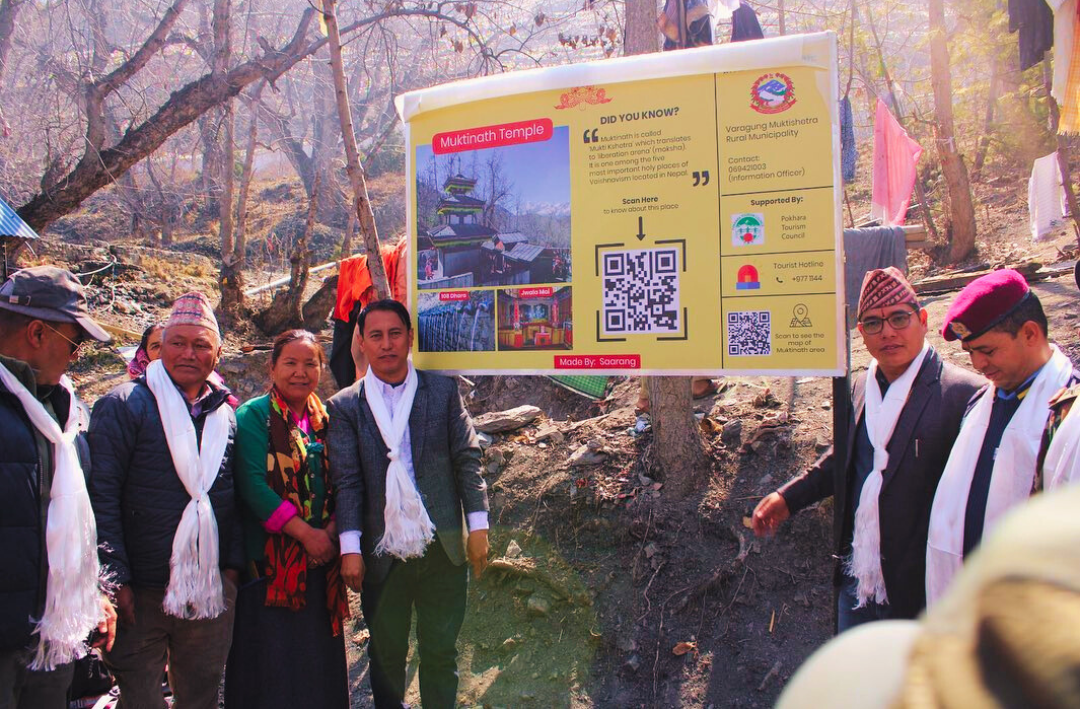
“We are requesting the same tech company to prepare it once again and install it in safer places. Then, visitors can scan the QR storyboard and get complete information about this place,” said Mayor Gurung.
As the younger generation is adopting digitization in the changed context the local governments are also trying to transfer their service accordingly. Their ways of service delivery and information dissemination seem to be gradually changing.
Protecting QR storyboards from rain, floods and fire remains a major challenge. Otherwise, visitors can get full information once they scan the QR storyboard. Since no bigger space is required or clumsy structures are needed to install QR storyboards, local governments are focused on digitizing cultural, historic and tourist spots of their areas– one by one.
“The new kind of technology development is attractacting the younger generation towards religion. This will promote religious tourism in the future,” said chairman Gurung.
The content presented in QR storyboards is authentic. The content is uploaded only through research and approval from the Department of Archeologists and experts from concerned fields.
In the case of Muktinath temple high-ranking Lamas, Hindu priest Kamal Nayanacharya and archeologists were consulted to approve the digital content. WiFi services are ensured around the areas where QR story boards are installed.
Several religious sites like Muktinath temple are managed by a committee led by the chief district officer. So, the local government has been demanding to revise laws and name the head of local government as chairman of such a religious development management committee. “Chief District Officer is the person responsible for registering and regulating organization like Muktinath Area Development Committee and forming an organization under his or her leadership is nor fair in any way,” said Gurung adding, “So, we want to revise law in line to ensure local government chief to lead such committees.”
Gurung plans to install QR storyboards in Upper Mustang areas where several sites with archeological importance exist. He’s also lobbying to lift restriction status in Chhusang and surrounding areas for tourism promotion.
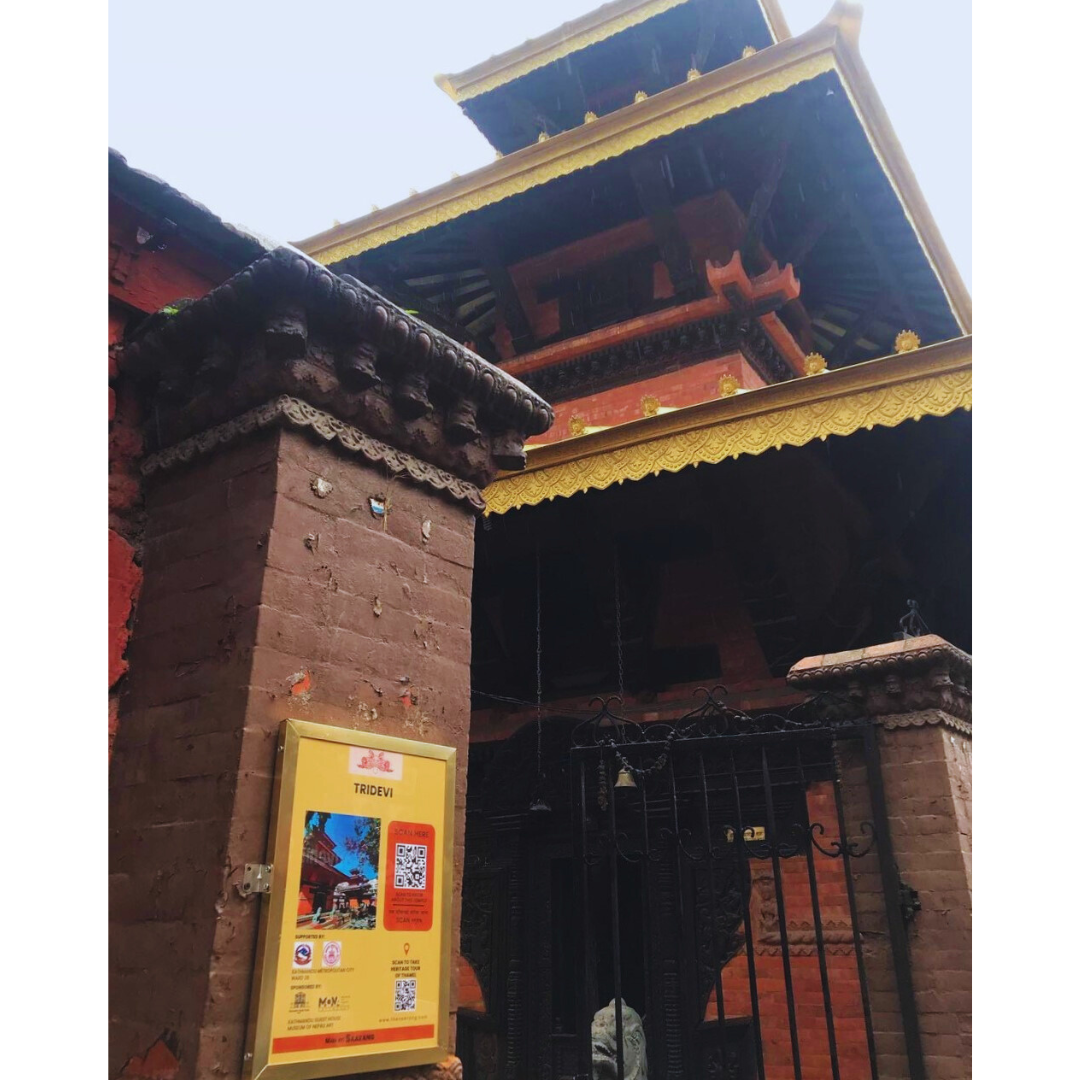
Because of the effectiveness of QR storyboards, rural municipalities, municipalities and ward offices across the country have also started to use digital boards. Installation of QR storyboards is trending everywhere. The digitization drive has begun after fresh graduates are recruited as IT officers in local governments. This was made possible after the Provincial Local Governance Support Program (PLGSP) supported local governments to recruit fresh information technology graduates as information technology officers. IT officers are experimenting with different ways of digitizing local governments, easing service delivery and innovations. PLGSP is a flagship programme of the Government of Nepal funded by Switzerland, Norway, the United Kingdom and the European Union, with UNDP as a technical support provider.
As part of experimenting digitization Baglung municipality in March installed 13 QR story boards in Baglung. Baglung Municipality mayor Basanta Kumar Shrestha inaugurated QR Story Board at religious, cultural and tourist sites including Baglung Kalika Temple.
“Young and smart IT professionals are trying to prove themselves different from others. That’s why there’s a kind of competition among local governments,” said Nagesh Badu, information technology and e-governance specialist at the PLGSP.
Expanding Digitization
Like local governments, other tourism bodies have also started to install QR storyboards. In Kaski, Pokhara Tourism Council has already installed QR storyboards in 16 major tourist destinations such as Barahi Mandir and National Mountain Museum. Boards are installed in collaboration with the local governments. “Response from visitors is quite positive,” said Sanjya Sigdel, secretary at the Pokhara Tourism Council.
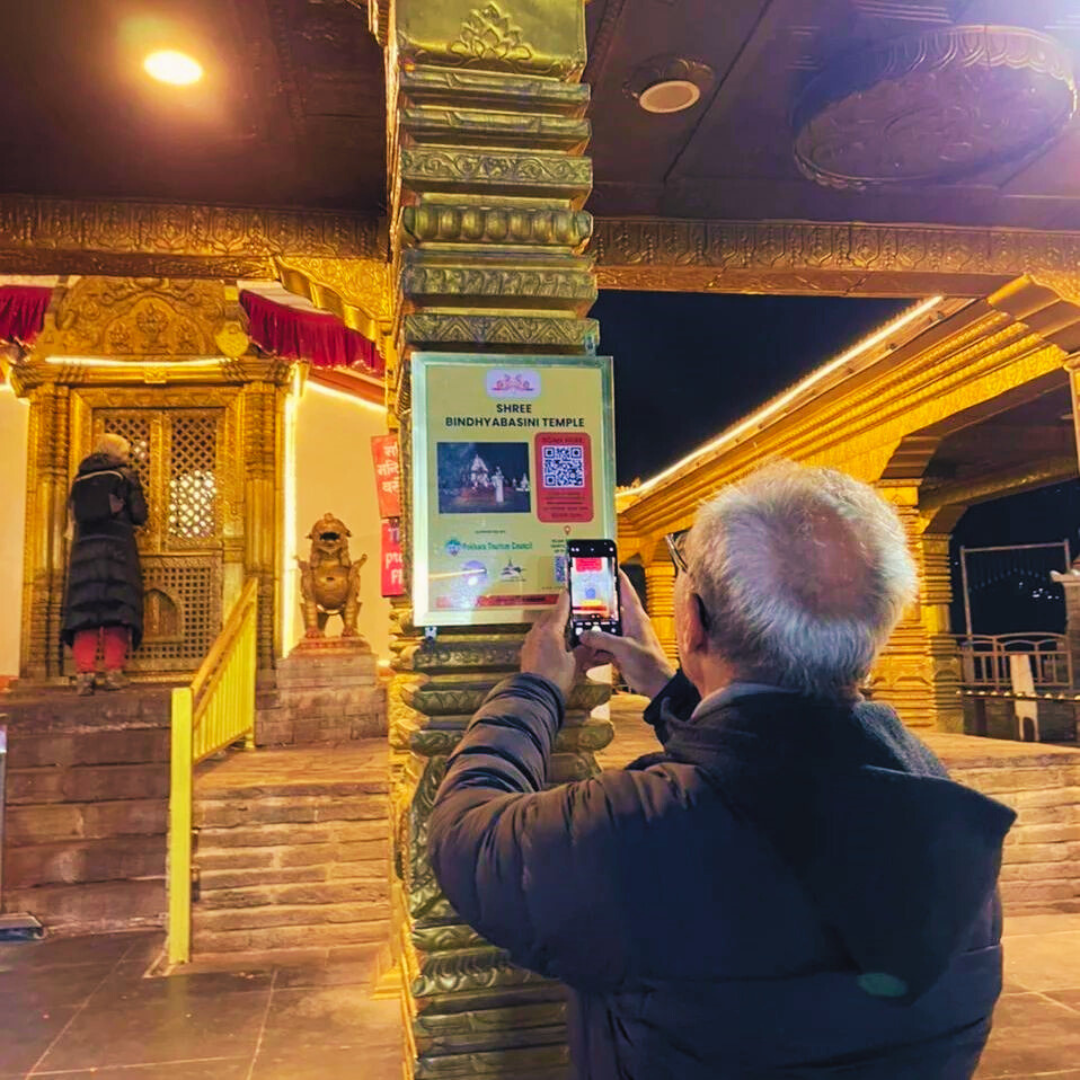
The Council is now planning to connect QR boards with concerned websites of local governments and connect nearby destinations using those QR. Impressed by initiatives taken by some local governments’ tourism councils in Pokhara, Lumbini and Kathmandu have started to install QR storyboards.
Lumbini is also following the path of Pokhara.
“Rather than fixing big clumsy billboards QR story boards have turned into a very effective tool to disseminate credible information to trekkers,” said Saroj Bhattarai, project manager at the Lumbini Development Trust.
Bhattarai thinks keeping the QR study board safe from rain and water is a challenge. “We should ensure timely maintenance or replacement if it’s damaged. Otherwise, visitors are more interested to scan it and get real information,” said Bhattarai.

IT Innovation
Sachin Dangi, one of the managers of the Saarang, an IT company developing QR codes of tourist, cultural and religious sites together with local governments, said more and more local governments are now approaching him to produce QR. Their target, however, is to develop advanced digital content in important places.
“So far, I’m happy. Excited from this QR-storyboard we are launching augmented reality, wherein an app puts cultural heritage sites as augment objects and it shows you as if they are in place. As of now, those five major destinations – Pashupatinath temple, Swyambhunath Stupa, Muktinath temple, Lumbini and Taal Barahi are featured in augmented reality. As augmented reality is targeted Nepali diasporas who want to make their future generation about Nepali culture heritages.
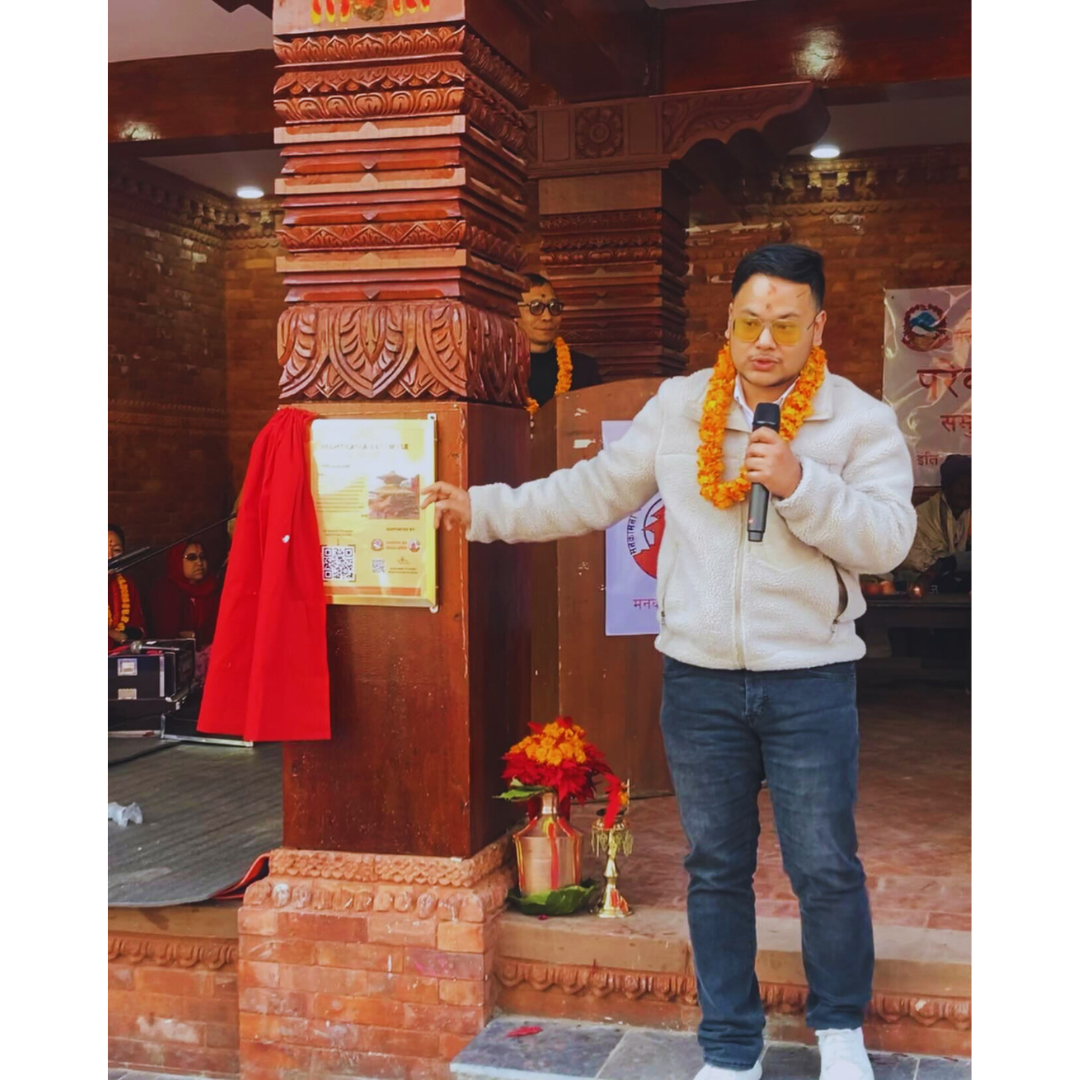
So far, QR story boards are installed in major tourism locations – Janakpur, Lumbini Pokhara (Bat Cave, Taal Barahi, Bindabasini, World Peace, Sarangkot), Muktinath temple in Mustang and Manakanama temple in Gorkha among others.
“QR story boards are being installed all across Nepal. We seek approval from ward or local government before doing so,” said Dangi, “Once agreed, we form a committee, collect details, prepare a draft and verify those data from the archeological department. Then, we design the board.”
Developing a storyboard of those sites costs 30 to 35 thousand rupees. Visitors are also interested to get real information about those sites while visiting. “In Lumbini, at least 600 visitors are scanning a QR storyboard in a month,” said Dangi adding, “Ten different QR storyboard related to various sites are installed and we have connected lesser visited like Tilaurakot and Kundan to given information about those places to visitors.”
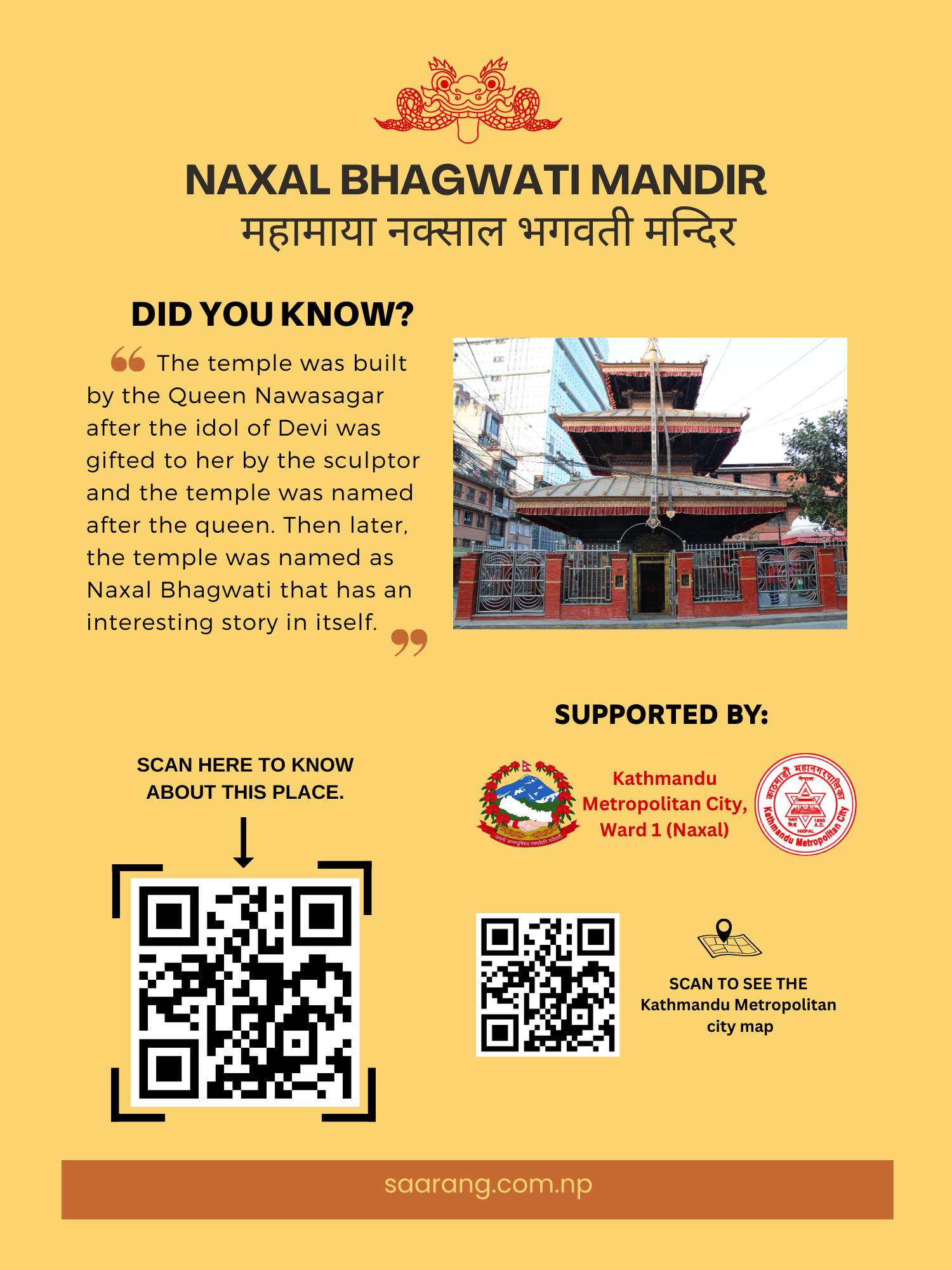
Local governments are investing to develop QR storyboards. Once installed in their areas the responsibility of physical protection lies up to locals and temple authority.
***

 Locations
Locations


